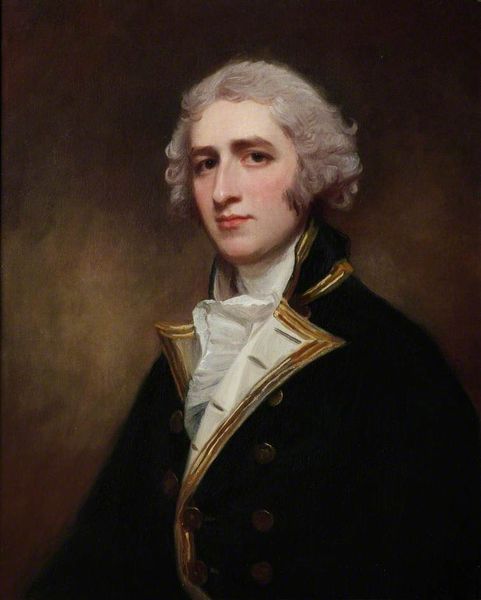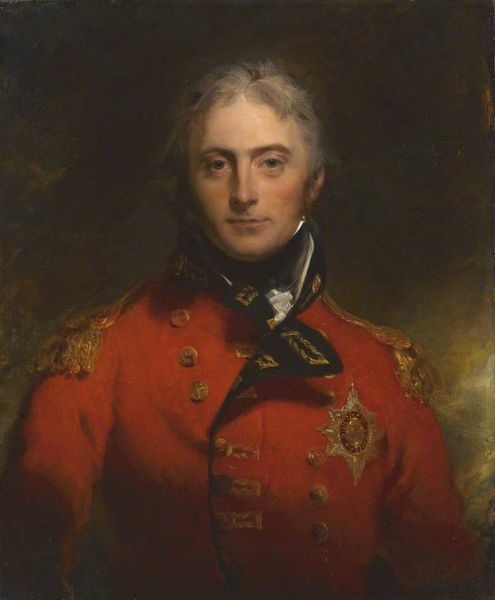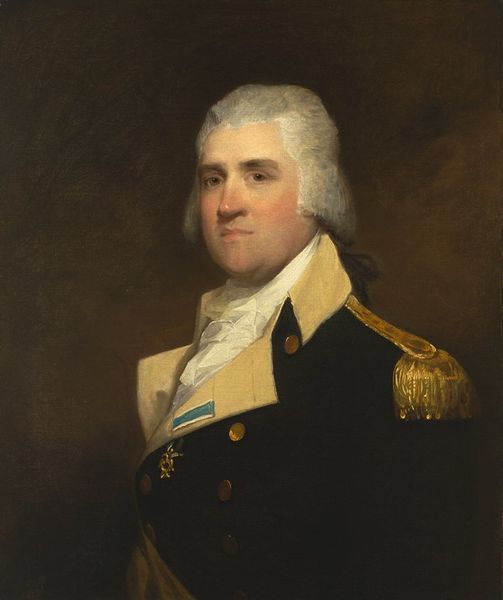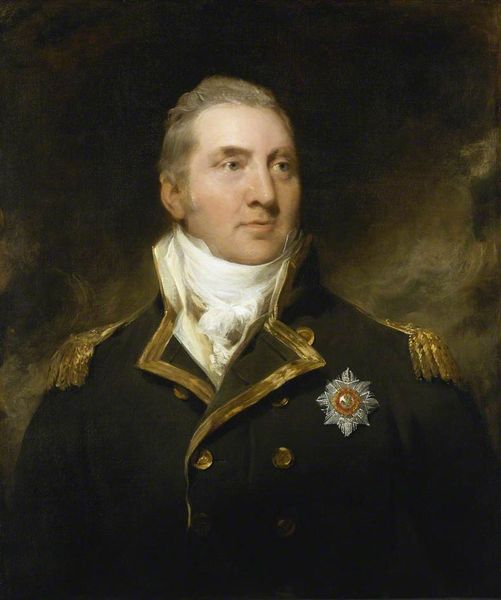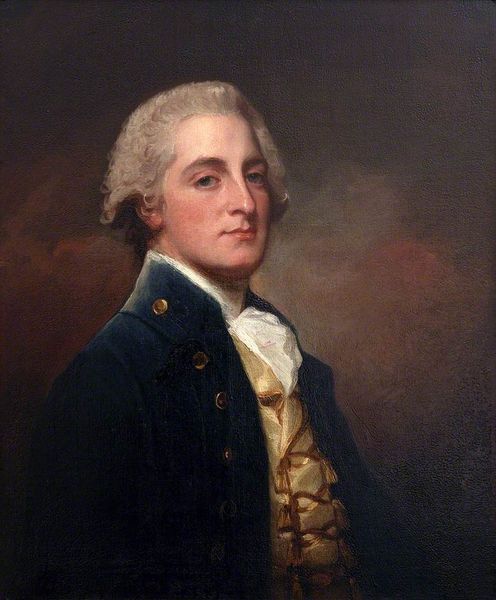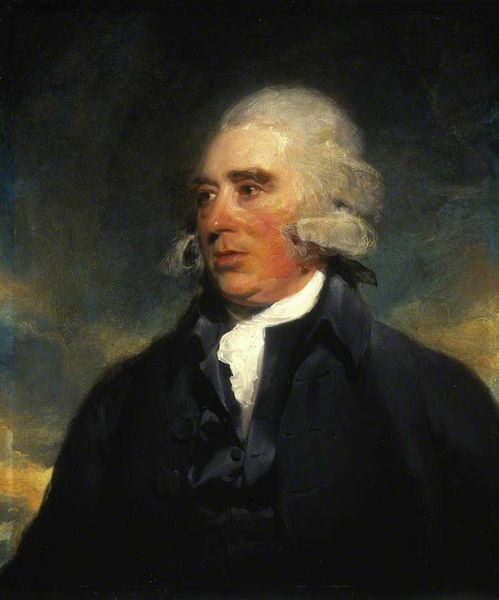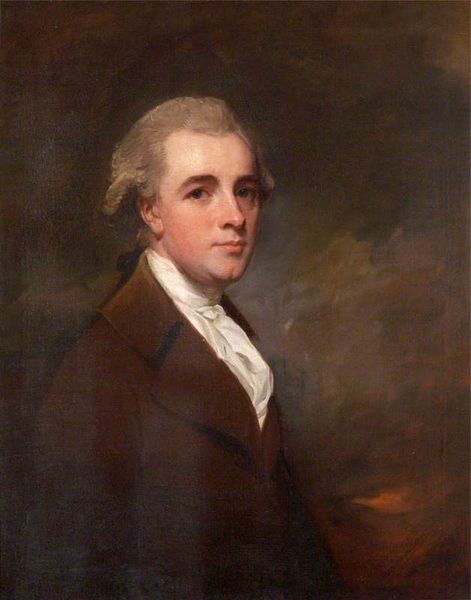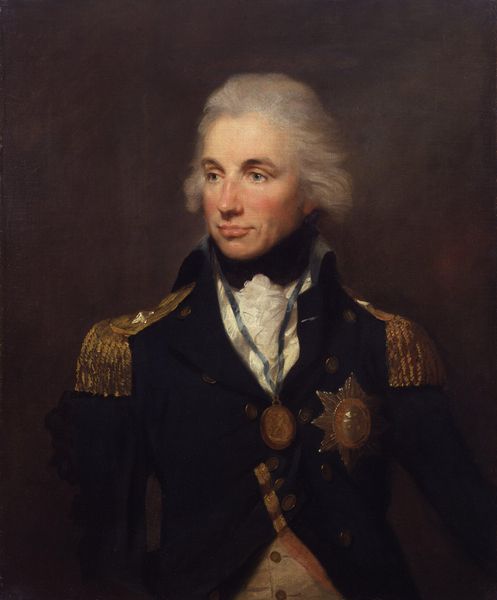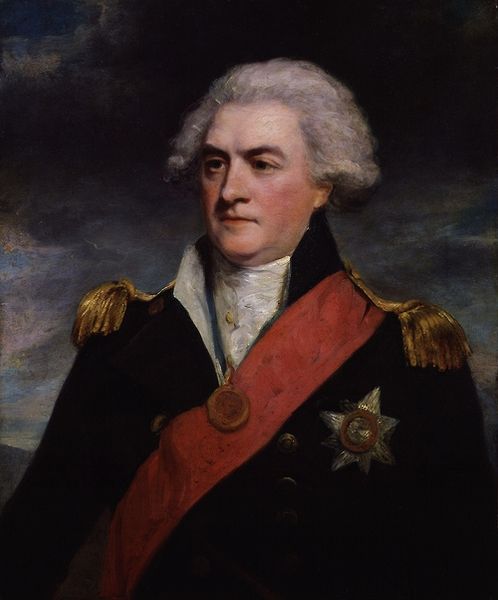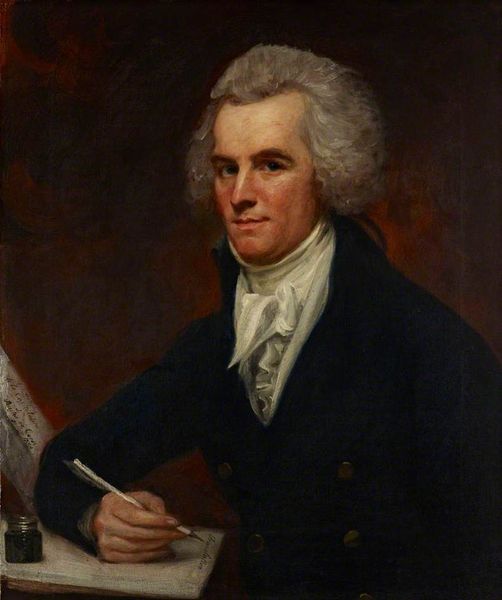
oil-paint
#
portrait
#
neoclacissism
#
portrait
#
oil-paint
#
history-painting
#
academic-art
Copyright: Public domain
Curator: Here we have Thomas Lawrence's portrait of "Sir Graham Moore," painted in 1792 using oil on canvas. What's your immediate reaction to it? Editor: Stark. Almost severe. The figure seems constrained, not just by his coat, but also by an underlying unease. There’s a somber quality that's quite compelling. Curator: Precisely. The artist uses neoclassicism conventions, especially the symmetry, and limits the range of values. Notice how the muted backdrop places all emphasis on the sitter and his stark countenance. The details are tightly rendered. Editor: While I agree that Lawrence employs a classically rigid structure, it also speaks volumes about societal pressures in late 18th-century England. Naval officers like Moore were instrumental in maintaining colonial power; this image, while seemingly innocuous, promotes a message of imperial strength rooted in exploitative labor. Curator: One can look at that a different way. Consider his garment and expression. They are more symbolic than representative of lived experiences. The artist presents an idealized portraiture in which the lines between lived life and national projection blur. Editor: Interesting point. Even if idealized, that still means these individuals and the aristocracy wielded significant political power at the expense of those without it. That uniform represents violence towards marginalized people around the globe. Curator: Perhaps. But can we also consider the composition as simply a sophisticated rendering of form, line, and texture? The gold embellishments against the dark coat create a delightful optical experience, one that pushes the boundaries of depth and dimensionality. Editor: Well, by acknowledging its construction, one cannot simply remove its ties to politics and power. Everything from Moore's gaze to the stiff white necktie suggests social codes and hidden systems of inequity at play. Curator: It seems we find ourselves at an impasse! I see aesthetic brilliance in Lawrence's craft, while you are attuned to the historical undertones. Editor: Indeed, but it makes viewing all the richer by engaging with both the form and its historical narrative.
Comments
No comments
Be the first to comment and join the conversation on the ultimate creative platform.
